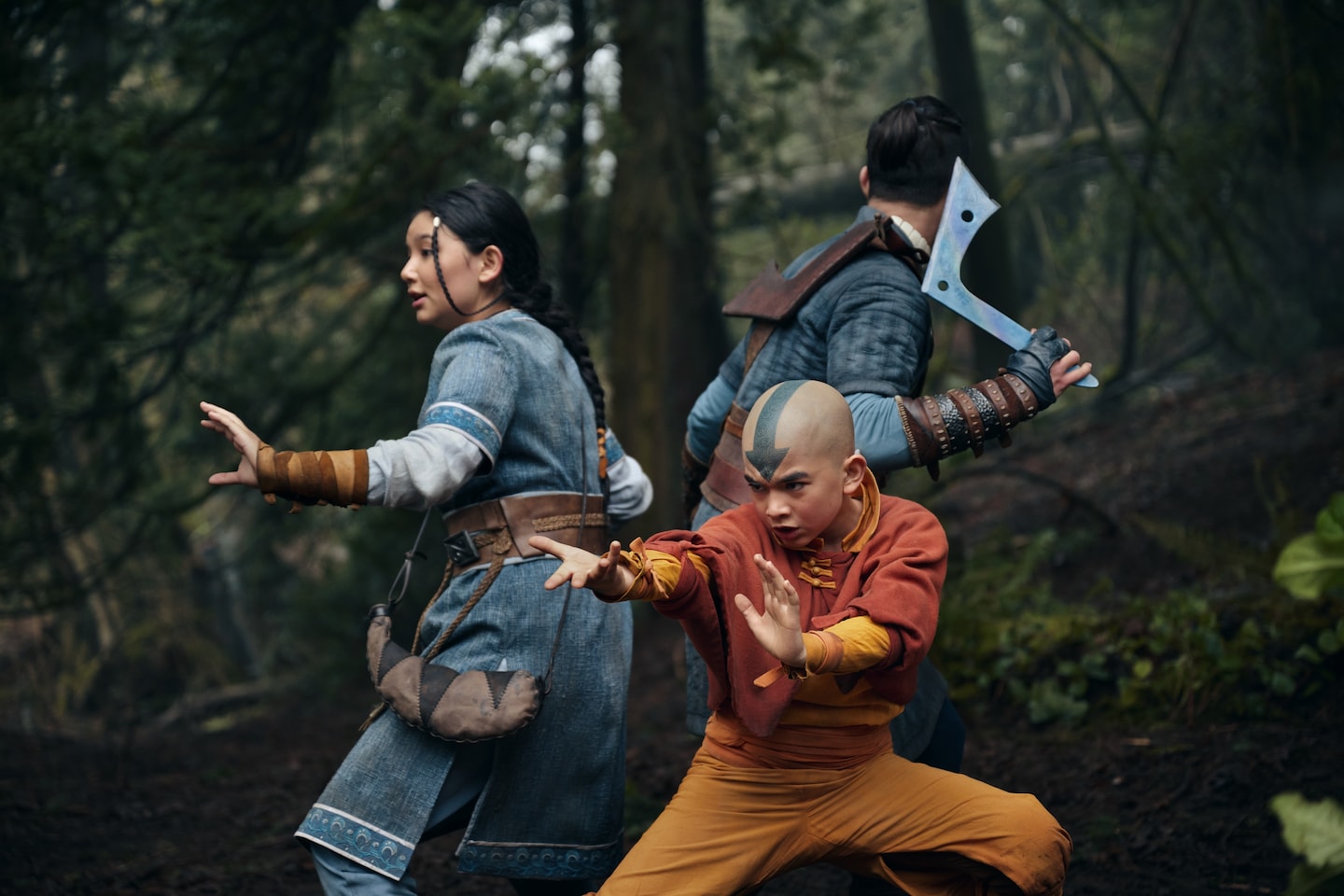
Long ago, in early 2005, “Avatar: The Last Airbender” hit our very thick television screens. Nickelodeon’s anime-inspired epic cartoon became a fan favorite with long-tail, generation-bridging appeal. Now it’s back — not for the first time, but more on that later — with a handsome, live-action adaptation on Netflix. Its millennial and Gen Z fans are stoked. Others may have questions. (And the trailer probably raises even more.)
Some basics: During the original series’ three-year run, it won an Emmy, a Peabody, and the admiration of critics and young audiences alike. Then, what was once required weekly appointment viewing became a nostalgia object in the age of streaming. (And guess what? It holds up.)
Eventually, Netflix sniffed an opportunity, announcing a live-action adaptation in 2018. Six years later, it’s here, with an eight-episode first season premiering Thursday. What’s the fuss? What makes this Avatar different from all other Avatars? And there’s a “sky bison?” Read on.
‘Avatar’ … but not that one?
You’re thinking of James Cameron’s Avatar movies. The next one comes out in 2025. There’s no connection.
This Avatar — the superior Avatar, fans might say! — takes place in a fantasy world where some people can control or “bend” one of the four elements (air, water, earth or fire), and one special, occasionally reincarnated person (the Avatar) can control all of them. That’s Aang, the main character, otherwise recognizable as the kid with the big blue arrow on his head. In the series, the 12-year-old boy ran away from home and was frozen for 100 years, during which time the fire nation of the show’s universe eradicated the airbenders and began warring with the remaining two elemental nations.
At the start of the series, Aang is discovered by Southern Water Tribe siblings Katara (a waterbender) and Sokka (a nonbender who at least has a cool boomerang), who help guide him on a cross-nation adventure on a sky bison named Appa to learn to bend all the elements and save the world. A wrench in that fun escapade: They are being tracked by Zuko, the exiled son of the fire nation lord who needs to bring the Avatar to his tyrannical father.
I promise, it’s fun!
Didn’t they already make a movie of this?
Oh, that movie? Fans don’t like to speak about that movie.
In 2010, M. Night Shyamalan directed a film adaptation that fans accused of whitewashing the Asian-inspired story. Names were mispronounced, a White actor played the Native Sokka, and (fans felt) various characterizations were mangled. To its credit, it did feature a young Dev Patel. In any case, devotees said the movie failed to capture the series’s soul and butchered the sprawling story. That’s why fans were so excited to see a live-action adaptation more true to the original.
Why should I, an adult, care about this?
Since its original run, “Avatar: The Last Airbender” has been recognized as a cultural phenomenon that far outshined other mid-2000s cartoons in both quality and longevity. When was the last time you heard anyone clamor for a “Krypto the Superdog” live-action series?
While a candle has always been burning in the hearts of Avatar fans, affinity for the series skyrocketed during the pandemic when Netflix acquired the streaming rights to the cartoon. According to research company Circana, “Avatar” was the most-watched children’s show on Netflix in 2020 and the 11th-most-watched series on the platform for the year.
Why is it resonant? Well, it’s a story of found family woven around well-developed lore, humor and a deeply humanized cast. A cloak of reality drapes each character, with sorrow often marring their joy and happiness lending a light in the shadows. And while it’s a kids’ show, its treatment of complex themes such as war feels personal and even hopeful. Put it all together and, as Kirk Hamilton of Kotaku wrote, “‘Avatar: The Last Airbender’ is one of the great TV shows of our age.”
All this over three seasons of children’s TV show and a bad movie?
Actually, there was also a spinoff series and some comics, plus there is a whole host of new Nickelodeon animated series and movies yet to come. Briefly: “The Legend of Korra,” which ran from 2012 to 2014, is set 70 years after the events of the original series and follows the next Avatar after Aang, a Southern Water Tribe member named Korra who discovers an underground criminal operation and learns to airbend from Aang’s adult son.
The next animated series, set to be released in 2025, will be set 100 years after Korra and focus on an earthbending avatar. Other planned animated offshoots include an adult Aang and Co. film, a movie about Zuko and two unnamed shows.
Is this live-action series going to be any good?
The reviews have been far from glowing. Take Variety, which wrote: “Although the series is far from the mess that was M. Night Shyamalan’s ill-conceived and whitewashed film adaptation, it will leave fans wishing the streamer had left DiMartino and Konietzko’s masterpiece alone.”
Going in, there were a few red flags. The original series creators, Michael Dante DiMartino and Bryan Konietzko, who signed on to be executive producers and showrunners for the live-action series, left the project in 2020 citing creative differences with Netflix. Konietzko added that a “negative and unsupporting” environment contributed to their departure.
Can I watch this with my kids?
Yes, but be prepared for some conversations. The Avatar story is as concerned with valuing love in all forms, destiny, kindness and humanity as it is with heavier themes such parental death, abuse, inequality, genocide and war. On the other hand, how cool does that boomerang look?
